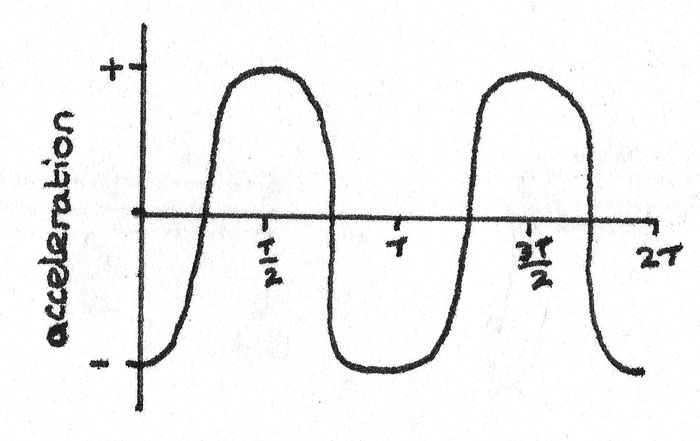

If the acceleration is constant the v-t graph will be a straight line. The slope of the tangent to a v-t graph at one point in time will give instantaneous acceleration in the case where there is non uniform (changing) acceleration. Using a method similar to deriving velocity from distance-time graphs, we can obtain values of acceleration from velocity-time graphs. V inst = v or, using the slope equation we calulte the slope of the tangent (the red line): To obtain the instantaneous velocity, that is, the velocity at one instant (one point in time - say at exactly t 1), one must take the slope of the tangent line that just touches the curve at that point. This gives us the average velocity between the time interval from t 1 -to- t 2 Slope (of secant line) = Delta d / Delta t The slope of the secant line (the line that cuts the curve at the two intersecting points (d 1,t 1 and d 2, t 2) can be calculated by the usual slope method: To obtain the average velocity between two points in time (say t 1 and t 2) we can draw the secant line between these two points and calculate the slope of the secant line.

It is sufficient to say, however that we can still obtain some useful information by relying on graphical analysis techniques. To analyze this function properly one would need to take the first derivative of the function using Calculus. We know that the velocity is changing as time goes on because the slope of this line is not constant and the function (of the form y = ax 2 + bx + c) is an increasing function. This graph illustrates the relationship between the position and the time for an object whose velocity is changing with time. Uniformly Accelerated Motion - Variable Speed We note that "m", the slope of the line (of the form, y = mx + b) is constant and can be calculated by several methods.ī. The slope m of the position-time graph gives the velocity of the object even when the relation between the position (d) and the time (t) is not a straight line. This is a typical graph of the relationship between position and time for an object moving at constant speed. Uniform Motion - Constant Speed - no acceleration


 0 kommentar(er)
0 kommentar(er)
